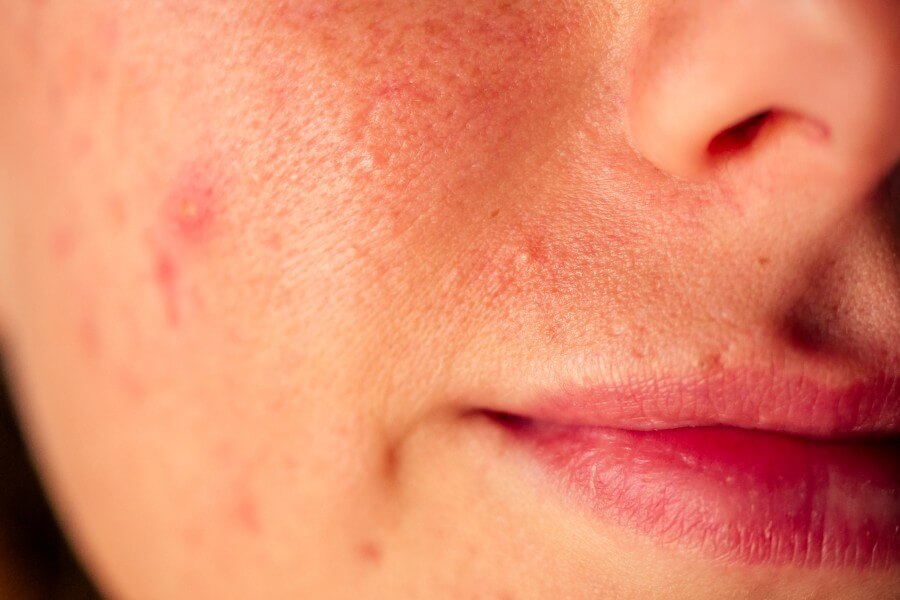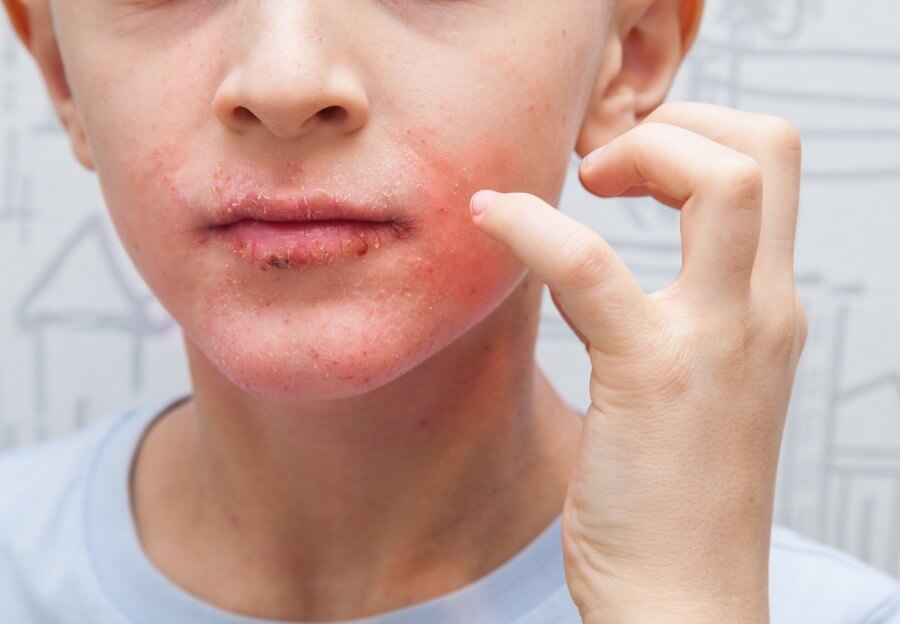Ingredients, Skin Care
What Are the Most Common Allergens in Skincare Products?
In recent years, there has been a significant increase in the number of people experiencing allergic reactions to skincare products. As consumers become more aware of the ingredients in their skincare routines, understanding common allergens becomes crucial. Identifying these allergens can help avoid potential reactions and maintain healthy skin.
Fragrances: Hidden Irritants
Fragrances are a common culprit behind allergic reactions in skincare products. They are added to products to enhance their scent, making them more appealing to consumers. However, fragrances can cause irritation and allergic reactions, particularly for those with sensitive skin. Synthetic fragrances contain multiple chemical components that can trigger skin issues. According to the American Academy of Dermatology, fragrance is the leading cause of allergic reactions on the skin, affecting nearly 1% of the population. When shopping for skincare, look for products labeled “fragrance-free” or “unscented” to minimize the risk of irritation.
Preservatives: Necessary but Problematic
Preservatives are essential in skincare products to prevent the growth of harmful bacteria and prolong shelf life. However, some preservatives can cause allergic reactions and sensitivities. Parabens, for instance, are commonly used preservatives that have been linked to skin irritation and hormonal disruptions. Another group of preservatives, formaldehyde-releasing agents, are also known to cause allergic reactions. These include ingredients such as quaternium-15, DMDM hydantoin, and imidazolidinyl urea. To avoid these allergens, look for products that use alternative, milder preservatives or are labeled as “paraben-free.”
Essential Oils: Natural but Not Always Safe
While essential oils are often touted for their natural benefits, they can also be a source of allergens in skincare products. Essential oils like tea tree, lavender, and peppermint can cause allergic reactions, especially in individuals with sensitive skin. These oils contain compounds that can irritate the skin and lead to dermatitis. It is essential to conduct a patch test before using products containing essential oils to ensure they do not cause a reaction. Additionally, consumers should be cautious of the concentration of essential oils in their skincare products, as higher concentrations can increase the risk of irritation.
Sulfates: Cleansing Agents with Potential Risks
Sulfates, such as sodium lauryl sulfate (SLS) and sodium laureth sulfate (SLES), are commonly used in skincare products for their cleansing and foaming properties. However, these ingredients can strip the skin of its natural oils, leading to dryness, irritation, and allergic reactions. People with sensitive skin or conditions like eczema may find sulfates particularly problematic. Opting for sulfate-free products can help reduce the risk of irritation and maintain the skin’s natural moisture barrier.


Alcohol: Drying and Irritating
Certain types of alcohol, like ethanol and isopropyl alcohol, are often used in skincare products for their quick-drying properties and ability to help ingredients penetrate the skin. However, these alcohols can be harsh on the skin, leading to dryness, irritation, and allergic reactions. It is crucial to distinguish between these drying alcohols and fatty alcohols, such as cetyl alcohol and stearyl alcohol, which are moisturizing and beneficial for the skin. Choosing products free from drying alcohols can help maintain skin health and prevent irritation.
A study published in the Journal of the American Academy of Dermatology found that 10.3% of patients patch-tested for allergic contact dermatitis were allergic to at least one preservative.
Nickel: An Unexpected Allergen
Nickel is a metal commonly found in various products, including skincare items like eyelash curlers and certain packaging materials. Nickel can cause allergic reactions in sensitive individuals, resulting in redness, itching, and swelling. This condition, known as allergic contact dermatitis, can be challenging to manage due to the widespread presence of nickel in everyday items. Consumers who suspect a nickel allergy should look for products labeled as “nickel-free” and be mindful of potential sources of exposure.
Lanolin: A Natural Yet Problematic Ingredient
Lanolin, a natural ingredient derived from sheep’s wool, is often used in skincare products for its moisturizing properties. Despite its natural origin, lanolin can cause allergic reactions in some individuals. Symptoms may include redness, itching, and swelling at the application site. Those with a known sensitivity to lanolin should avoid products containing this ingredient and seek alternatives that provide similar moisturizing benefits without the risk of irritation.
Formaldehyde: A Potent Sensitizer
Formaldehyde and formaldehyde-releasing preservatives are used in various skincare products for their antibacterial properties. However, formaldehyde is a potent sensitizer that can cause allergic reactions, particularly in individuals with sensitive skin. Exposure to formaldehyde can result in redness, itching, and even blistering. To avoid this allergen, consumers should check ingredient labels for formaldehyde-releasing agents and opt for products that do not contain these preservatives.
Cocamidopropyl Betaine: A Common Irritant
Cocamidopropyl betaine is a surfactant derived from coconut oil commonly used in skincare products for its foaming and cleansing properties. Despite being derived from a natural source, this ingredient can cause allergic reactions and irritation in some individuals. Symptoms may include redness, itching, and dryness. Those with sensitive skin or a history of allergies should consider avoiding products containing cocamidopropyl betaine and seek milder alternatives.
Statistical Insight
A study published in the Journal of the American Academy of Dermatology found that 10.3% of patients patch-tested for allergic contact dermatitis were allergic to at least one preservative. This highlights the prevalence of preservative-related allergies and underscores the importance of being aware of potential allergens in skincare products.
Preventing Allergic Reactions
Preventing allergic reactions involves careful consideration of the ingredients in skincare products. Reading labels and understanding common allergens can help individuals make informed choices. Additionally, performing patch tests before using new products can identify potential allergens and prevent widespread reactions. For those with sensitive skin, consulting a dermatologist for personalized advice can be beneficial. Dermatologists can recommend suitable products and provide guidance on avoiding allergens based on individual skin types and sensitivities.
The Role of Hypoallergenic Products
Hypoallergenic products are formulated to minimize the risk of allergic reactions and are often free from common allergens like fragrances, parabens, and certain preservatives. While “hypoallergenic” is not a regulated term, these products can be a safer choice for individuals with sensitive skin. However, it is essential to note that even hypoallergenic products can cause reactions in some people. Therefore, patch testing and careful ingredient scrutiny remain crucial.
Allergens in Skincare Products: What You Need to Know
Understanding the most common allergens in skincare products is essential for maintaining healthy skin and preventing allergic reactions. By being mindful of ingredients like fragrances, preservatives, essential oils, sulfates, alcohols, nickel, lanolin, formaldehyde, and cocamidopropyl betaine, consumers can make more informed choices about their skincare routines. Opting for hypoallergenic products and conducting patch tests can further reduce the risk of irritation and ensure a healthier skincare experience. Remember, everyone’s skin is unique, and what works for one person may not work for another. Being proactive and informed is the key to achieving and maintaining healthy, glowing skin.









